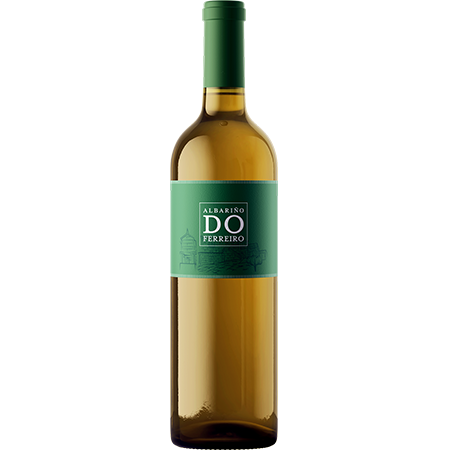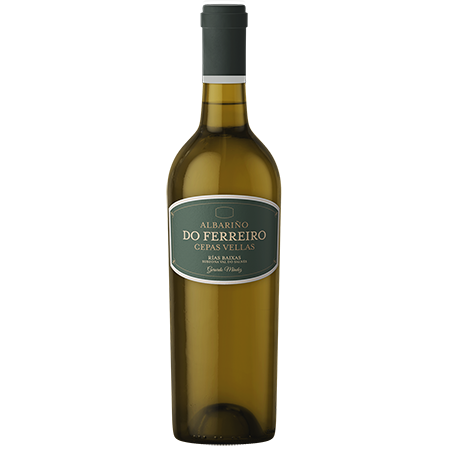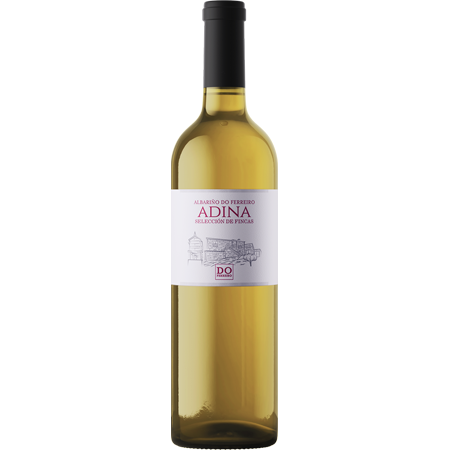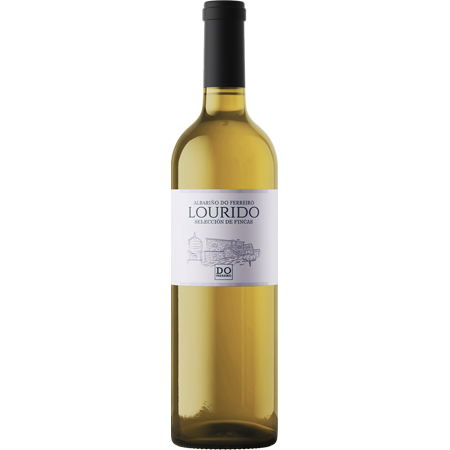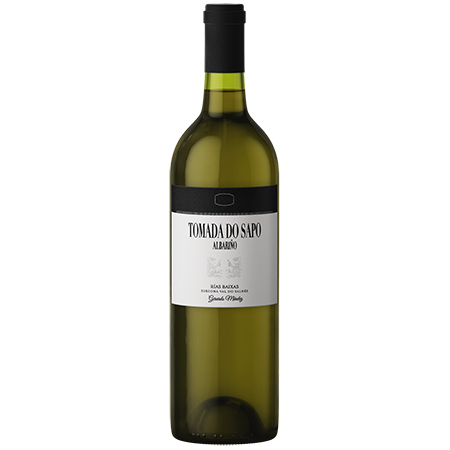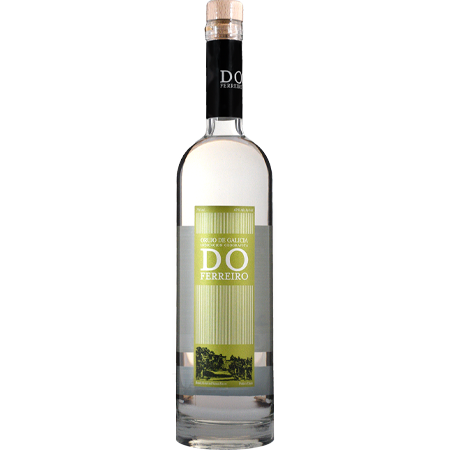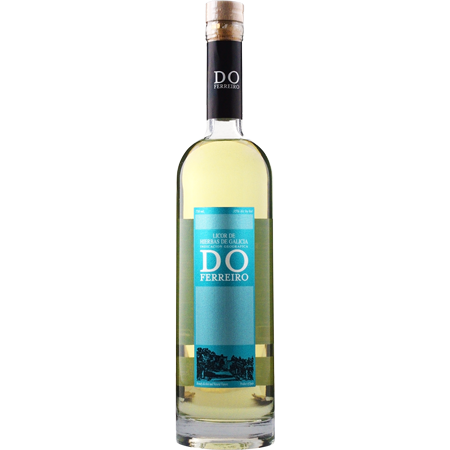Do Ferreiro
(doh feh-rey-roh) | Rías Baixas – Galicia
Do Ferreiro is a small family winery in the historic heart of Spain’s coastal Rías Baixas region.
Highly regarded for crafting albariño, the winery has become a reference point for the grape. They farm over 175 tiny plots of albariño by hand, located in the Salnès subzone of Rías Baixas. This valley’s proximity to the ocean, ideal climate due to the natural protection by mountain ranges, and decomposed granitic soil have gained the reputation for being the ideal zone in Rías Baixas for growing profound albariño. The blend of these plots is what makes up Do Ferreiro Albariño.
Gerardo Méndez was part of the original group of 14 growers who elevated the region’s potential, as he and his father Francisco were integral in forming the original denomination of origin Rías Baixas in 1988. Gerardo has become known for his outsized contribution to the region as a leader in quality winemaking and for his incredible generosity and amazing hospitality. For those who have been fortunate enough to sit with Gerardo at his table and get to know him, they’ve found themselves in the presence of a man whose generosity, heart, and passion for sharing the secrets of his culture knows no bounds.
Where the Land Meets the Sea
The meals at Do Ferreiro have become legendary in the wine world. It is impossible to speak of the wines of this region without talking about the food in tandem, and there is no better host for the gastronomy of the region than the Mendez family. One does not exist without the other here or anywhere in Spain, for that matter. Vigo is one of Spain’s largest ports where fishing is the economic engine that drives the region. Here you will find fishers with shovels digging for clams and harvesting mussels from the platforms which dot the estuaries, or rías. You will also find world-famous canning facilities producing conservas. Everything from razor clams to baby squid, bonito del norte tuna, delectable anchovies, mussels, clams, and sardines are expertly preserved in tins to be eaten in the finest restaurants in Spain and transported all over the world. Octopus (pulpo a la Gallega) is practically a religion, sea urchin, percebes (incredibly delicious and rare gooseneck barnacles), brilliant orange langoustines, black-shelled umami-bomb scallops, and a wide variety of bright, saline oysters are just some of the many things you may find on your plate when dining in Rías Baixas. The possibilities are as limitless as the ocean and one’s imagination, and nothing is as satisfying with these treasures from the sea as a glass of Do Ferreiro Albariño.
The craggy coastline of Rías Baixas in northwestern Spain has emerged from obscurity in the past decade to finally claim its place alongside other great wine regions known for their diversity of both food and wine. Parallels exist with France’s Loire Valley and Normandy. Like these other well-known areas, Rías Baixas has a bounty of indigenous grape varieties and terruño to explore but also an unparalleled gastronomic tradition. Galicia, in general, is one of the most incredibly rich and rewarding places to explore food, wine, and culture. Nothing short of a complete revolution in the vineyards is well underway, built on the pioneering work done by legends like Gerardo Méndez of Do Ferreiro.
Pioneering Rías Baixas
The first wine made by Gerardo without labels was in 1973, with the first labeled, vintage wine from Do Ferreiro appearing in 1986. The Do Ferreiro house, Casa Grande, is located in Lores, at the foot of the Armenteria range where it is protected from the fog from the south, facing the Ría de Arousa. Directly in front of the house lies the famed Cepas Vellas vineyard, where each vine is uniquely pruned to suit the personality of these old vines, already documented as being old in 1850. Bottled exclusively from this single vineyard, which contains the oldest documented albariño vines in the world, Cepas Vellas has become a legendary, defining white wine of Spain for its intensity, transparency, and ability to improve with age for an incredible period of time. Gerardo’s achievement with Cepas Vellas put Rías Baixas on the map qualitatively.
In addition to his work in creating the denomination, Gerardo also began recovering old vineyards, introducing organic farming, and restoring traditional trellising methods. Gerardo is known for his absolute faith in the local emparrado system (pergola training), which he has adapted and refined over the years to allow more sun into the canopy, allowing for even ripeness and naturally lower yields. He lets his chickens roam through the vineyards the way his ancestors had done in the past, providing both natural pest control and contributing valuable nitrogen to the soil. Grapes are harvested by hand with great scrutiny, sorting happens in the vineyard, bunch-by-bunch, as opposed to ever using a sorting table. Such is the dedication to quality that the farming and daily tending to vineyards is where the time and investment is spent. The winemaking is straightforward with no makeup. Gerardo has always been a proponent of using the indigenous yeasts present in his vineyard for fermentation, long before it became a trendy marketing push. Here in Sálnes, that’s just the way his father Francisco (known locally as Pepe o Ferreiro or Pepe the Blacksmith, hence the origin of the Do Ferreiro name) made his wines to sell to his neighbors.
In the early 1980s, there were almost no dedicated wineries and all the wine was made in people’s homes for personal consumption or sold to the local cooperative. One has to understand what Galicia was like twenty years ago: it was (and still is) an extremely rural place where wine was food, afforded the same amount of glamour as carrots or potatoes. But like all Gallegos who take pride in their harvest, Gerardo realized that his grapes could be coaxed to produce something special, something extraordinary and world class. Before the 18th century, everything belonged to the monasteries until an extended economic and social process of selling the lands and property of the religious orders to private individuals resulted in the distribution of tiny parcels of land to many owners. This process is significant, as it explains the current landscape where the average vineyard in the region is 0.4 hectare and a winery like Do Ferreiro has to farm 175 different plots to survive. After the Phylloxera epidemic, crosses and high yielding grapes such as palomino were planted for weight. It wasn’t until the late 1970s and the 1980s that the first generation of quality growers began replanting with indigenous grapes like albariño, loureiro, godello, treixadura, caiño tinto, espadeiro, loureiro tinto, and souson, reclaiming the identity of the region.
Most of Gerardo’s neighbors in that era didn’t understand why someone would work so hard, risking their harvest by using indigenous yeasts and waiting to harvest until the grapes were perfectly ripe. Initially, they thought he was crazy, but as the wine started to achieve fame outside of the region, people realized that he had been a visionary all along. Aspiring growers began to seek his advice in both farming and winemaking. Do Ferreiro was born from incredible raw material and an uncompromising dedication to quality, a legacy that continues today with his Gerardo’s son, Manuel, and daughter, Encarna, all working together to craft Do Ferreiro.
Towards the Future With the Next Generation
Today, Manuel and Encarna contribute to the same spirit of uncompromising quality to the family business as they also push the exploration of Rías Baixas into new, uncharted territory. Manuel, who took over as lead-winemaker from his father with the 2015 vintage, is busy isolating plots and exploring how different soils, elevations, and exposures can affect these transparent wines. He is farming single vineyards, which demonstrate that the site is multidimensional here in the same way that it is in all great wine growing regions of the world.
With the introduction of his new, single-vineyard Lourido, Adina, and Dous Ferrados wines, he is leading the way to completely redefining the concept of what we think of when we speak of albariño from Rías Baixas. There is even a red wine from incredibly old caiño tinto vines that look like the trunk of an elephant. Manuel is also a dedicated musician whose instrumental post-stoner band, Kaleikia, explores the sonic expressions of their landscape and experiences. His older sister Encarna is responsible for the management of the winery and for organizing the incredible array of moving parts it takes to farm 175 separate tiny plots to a world-class standard. Encarna is intimately involved in every aspect of the production process from grape to bottle and ensuring the quality of Do Ferreiro.
We are indeed still just at the very beginning of a long journey of discovery of the potential of Galicia and northwestern Spain. This is a journey that Manuel and Encarna are uniquely equipped to explore with their Gallego roots and family commitment to authenticity and excellence. Galicia is an unforgiving climate, especially for newcomers and outsiders. Here, greatness is carefully crafted and the landscape demands respect and hard work. The future is exciting, as Galicia works to claim its place as one of the world’s great viticultural regions, we are thankful to have as our guide, the generous Gerardo Méndez, and his incredible family.

